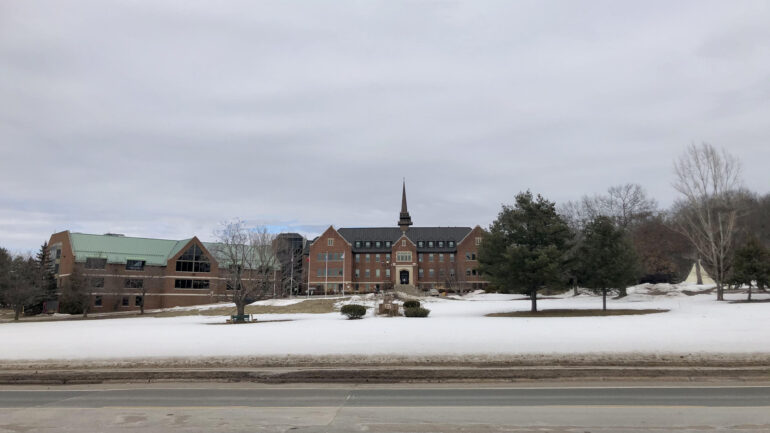
SAULT ST. MARIE, Ont — The Shingwauk Kinoomaage Gamig Centre (SKG), which dedicates its resources to supporting the heritage and land through Anishinaabe education, will soon find its new home at The Anishinaabek Discovery Centre.
The centre is expected to open in May and operate as a teaching forum for SKG, which currently operates out of Algoma University, and, even more recently, the Anishinaabe Studies program is virtual because of COVID-19.
Dianne Roach, the interim administrator of SKG, said although online learning is a great opportunity, it has left students from experiencing the main purpose of the studies, which is providing hands-on experience.
“With our students, it has been difficult,” she said. “Once they took away the face-to-face learning experience and transformed that into online learning, there have been hurdles.
“Students are used to having first-hand experiences, same with our professors. There are challenges of trying to meet all of the student’s needs through video conferences and emails,” Roach said.

The institute, named after a Chief who was instrumental in creating Garden River First Nation in the 1850, will be moving its students to the centre on May 21, given the city does not enter another lockdown.
The centre will also be home to Canada’s first-ever First Nations’ operated National Chiefs Library, a $12 million facility that will also be home to many First Nations archives and literature, stated Paul Sawa, the director of Library and Archives SKG.
“The idea to create The Anishinaabek Discovery Centre goes back at least five years for this specific project, and it was acknowledged there weren’t a lot of Indigenous organizations who were focusing on the management for their archives material, and there was a need identified,” he said.
The structure and plan to build a National Chiefs Library comes from the late Chief Shingwaukonse of Garden River First Nation, who envisioned a “Teaching Wigwam,” Sawa said.
“The vision of Chief Shinwaukonse was misappropriated and corrupted during the residential school process, and the Indigenous community came to terms with how the residential school affected the people here,” he said.
“What Chief Shinwaukonse’s vision was and said was to resurrect those ideas and make something for ourselves so we can have an Indigenous-run educational system,” Sawa said.

The Anishinaabek Discovery Centre, which would be a central hub for First Nations, has been in the works since 2017, Roach said.
“The intention is to have all of the archives that national chiefs have. We would be a repository for any of the research or scholarship information across the country,” she said.
“The support of The Anishinaabek Discovery Centre by providing materials and records in all formats,” Roach said. “To be housed at the National Chiefs library and support in lobbying external industries and organization that poses materials that can be housed here as well.”
Sawa it’s essential the centre is across the street from Algoma University because it provides offers an educational opportunity for individuals to understand. He does say it has been difficult to advocate for the centre given pandemic restrictions.
“I think one of the challenging things about the pandemic is, we haven’t been able to get out to the community,” Sawa said. “And talk to people about what we really want this centre to do.
“We want it to be something that fulfills First Nations goals and helps with preserving their culture and preserve their language and improve the opportunities for the young people here,” he said.
The National Chiefs Library is currently collecting archives and lectures to be put on display, and classrooms and halls have been prepared, Roach said. She explains that as much as it’s been frustrating not to be in the building yet, it’s a big achievement for the community.
“To the board of directors, it’s almost like a peaceful accomplishment because it really is a home for all documents with the archive centre,” Roach said. “It is an opportunity to bring light into the dream that he (Chief Shinwaukonse) had, and that is First Nations educations and taking the western views and incorporating that into the ways of knowing and living off the land.”

